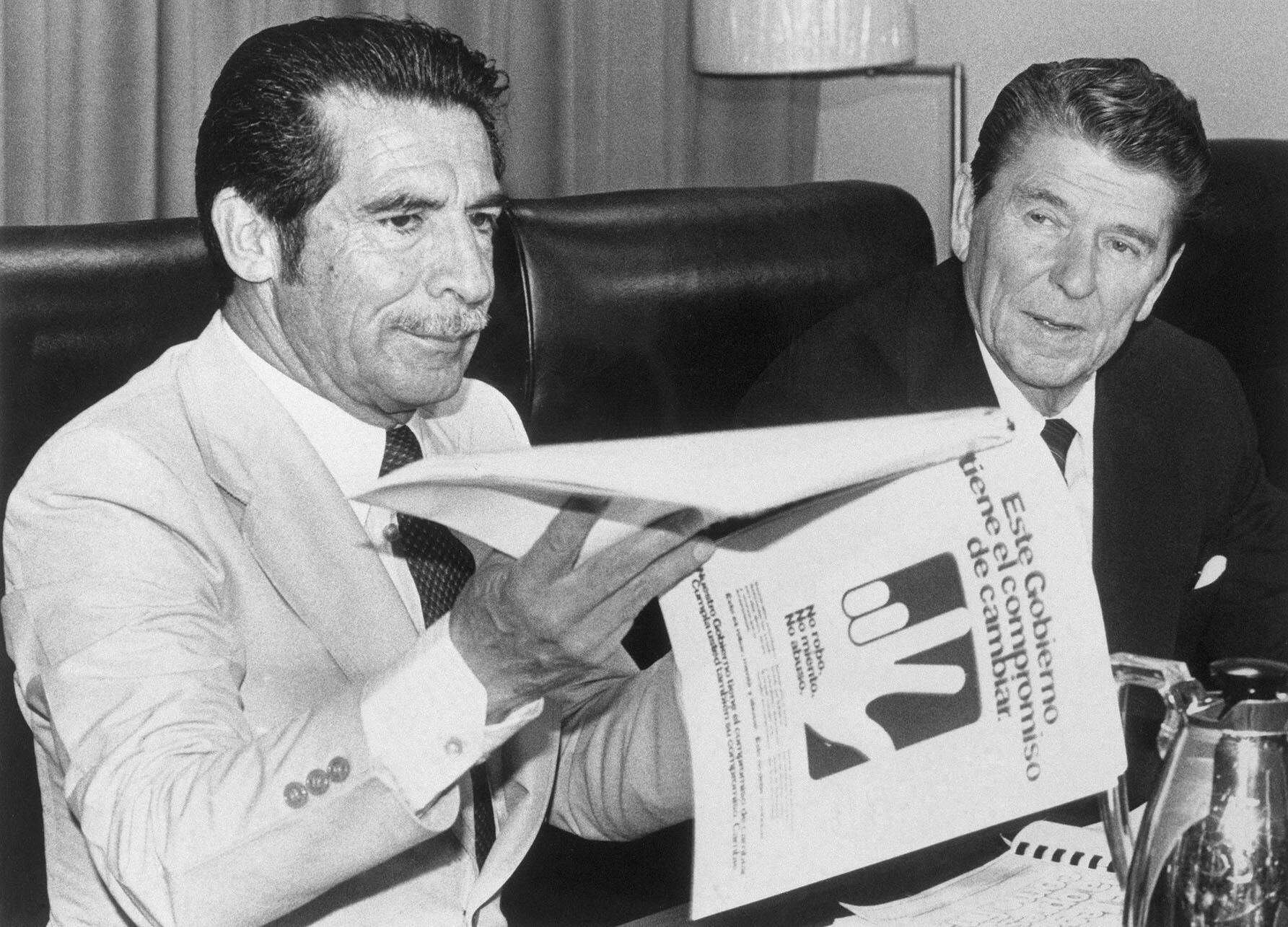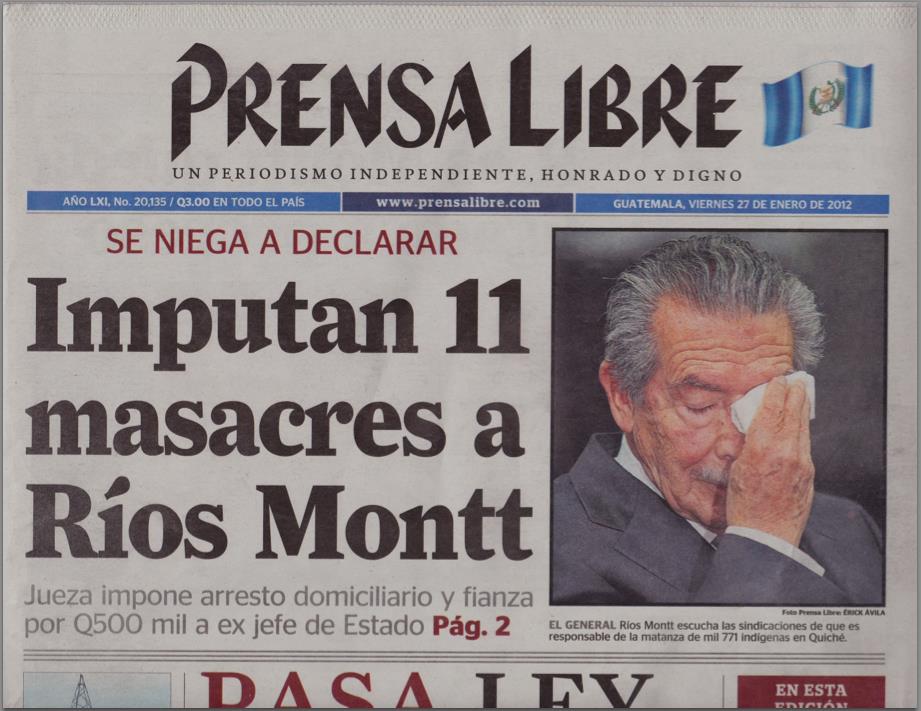Latin America
In reply to the discussion: What I Learned From a Guatemalan Shaman [View all]Judi Lynn
(163,210 posts)would have known immediately why the Mayan shamans felt reference to the monstrous history thrust upon the indigenous people was necessary.
Here's a completely insufficient summary for other people who also didn't learn anything about it until well after their school years, from Wikipedia:
The Guatemalan genocide, also referred to as the Maya genocide,[3] or the Silent Holocaust[7] (Spanish: Genocidio guatemalteco, Genocidio maya, or Holocausto silencioso), was the mass killing of the Maya Indigenous people during the Guatemalan Civil War (1960–1996) by successive Guatemalan military governments that first took power following the CIA-instigated 1954 Guatemalan coup d'état.[8][9] Massacres, forced disappearances, torture and summary executions of guerrillas and especially civilians at the hands of security forces had been widespread since 1965, and, with the backing of the United States, was a longstanding policy of the military regime.[6][10][11][5][12] Human Rights Watch (HRW) has documented "extraordinarily cruel" actions by the armed forces, mostly against civilians.[13]
The repression reached genocidal levels in the predominantly indigenous northern provinces where the Guerrilla Army of the Poor operated. There, the Guatemalan military viewed the Maya as siding with the insurgency and began a campaign of mass killings and disappearances of Mayan peasants(what they referred mayans as, not what they actually are). While massacres of indigenous peasants had occurred earlier in the war, the systematic use of terror against them began around 1975 and peaked during the first half of the 1980s.[14] The military carried out 626 massacres against the Maya during the conflict[15] and acknowledged destroying 440 Mayan villages between 1981 and 1983. In some municipalities, at least one-third of the villages were evacuated or destroyed. A March 1985 study by the Juvenile Division of the Supreme Court estimated that over 200,000 children had lost at least one parent in the war, and that between 45,000 and 60,000 adult Guatemalans were killed between 1980 and 1985.[16] Children were often targets of mass killings by the army, including in the Río Negro massacres between 1980 and 1982.[17] A 1984 report by HRW discussed "the murder of thousands by a military government that maintains its authority by terror".[18]
An estimated 200,000 Guatemalans were killed during the war, including at least 40,000 persons who "disappeared".[2] 92% of civilian executions were carried out by government forces.[2] The United Nations-sponsored Commission for Historical Clarification (CEH) documented 42,275 victims of human rights violations and acts of violence from 7,338 testimonies.[19][20] 83% of the victims were Maya and 17% Ladino.[21] 91% of victims were killed in 1978 through 1984, 81% in 1981 through 1983, with 48% of deaths occurring in 1982 alone.[1][better source needed] In its final report in 1999, the CEH concluded that a genocide had taken place at the hands of the Armed Forces of Guatemala, and that US training of the officer corps in counterinsurgency techniques "had a significant bearing on human rights violations during the armed confrontation", but that the US was not directly responsible for any genocidal acts.[22][14][23][11][24]
Former military dictator General Efrain Ríos Montt (1982–1983) was indicted for his role in the most intense stage of the genocide. He was convicted in 2013 of ordering the deaths of 1,771 people of the Ixil Indigenous group,[25] but that sentence was overturned, and his retrial was not completed by the time of his death in 2018.
1954 Guatemalan coup
The 1954 Guatemalan coup d'état deposed the democratically elected Guatemalan President Jacobo Árbenz and marked the end of the Guatemalan Revolution.[26] The coup had the goal of stopping and reverting the increasingly progressive policies of the democratically-elected Guatemalan government, which clashed with the business interests of US companies amidst the Cold War, notably the United Fruit Company (now Chiquita).[26][9] It installed the military dictatorship of Carlos Castillo Armas, the first in a series of U.S.-backed authoritarian rulers in Guatemala. The coup was largely the result of a CIA covert operation code-named PBSuccess.[9]
More:
https://en.wikipedia.org/wiki/Guatemalan_genocide
~ ~ ~



One of the genocidal Guatemalan Presidents, former General, and fundamentalist Pentecostal minister, Efraín Ríos Montt, and Ronald Reagan, for whom former CIA Director, George H W Bush served as the Vice President.
~ ~ ~
May 21, 2013
Conviction of Genocidal Dictator Efrain Rios Montt Overturned by Guatemala’s Highest Court
Asawin Suebsaeng

Saul Martinez/EFE/ZUMA Press
On Monday, Guatemala’s Constitutional Court overturned the conviction of former dictator Efraín Ríos Montt, an army general who ruled as de facto president from 1982 to 1983. On May 10, Ríos Montt, 86, was found guilty by a three-panel tribunal on charges of genocide and crimes against humanity, and sentenced to 80 years in the slammer; he is the first former head of state in the Americas to stand trial for genocide. But less than two weeks later, Guatemala’s highest court threw out all proceedings in the case dating back to April 19, in part thanks to an aggressive lobbying effort by the nation’s most influential business federation. Due to the court’s 3-2 decision, the way forward—for Ríos Montt’s opponents, for his supporters—has been thrown into question. After Monday’s ruling, Ríos Montt was sent back to house arrest, where he had been since the case started in January 2012.
Here’s a quick reminder of who Efraín Ríos Montt is, and what he did.
1. During his 17-month stint as military dictator, he oversaw the genocide by his armed forces of at least 1,771 members of the indigenous Maya Ixil population. Roughly 100 survivors testified during the course of his trial.

Efrain Rios Montt newspaper trial
This Guatemala City newspaper reads, “Ríos Montt charged with 11 massacres.” Via Granito: How to Nail a Dictator/Facebook
2. Along with the mass murder, his military regime carried out a policy of forced displacement, forced assimilation, torture, systematic rape and sexual assault, starvation, and arbitrary execution against those labeled as political opponents.
3. Due to his staunchly anti-communist attitudes during the Guatemalan Civil War, the general received plenty of financial, military, and political support from President Ronald Reagan’s administration and friends in the United States. (Ríos Montt is an alumnus of the School of the Americas, a Department of Defense-owned institute and notorious tyrant-mill at Fort Benning, Georgia that taught torture, blackmail, death-squad tactics, and counter-insurgency to numerous Latin American strongmen and human rights abusers.)
More:
https://www.motherjones.com/politics/2013/05/conviction-dictator-efrain-rios-montt-overturned/